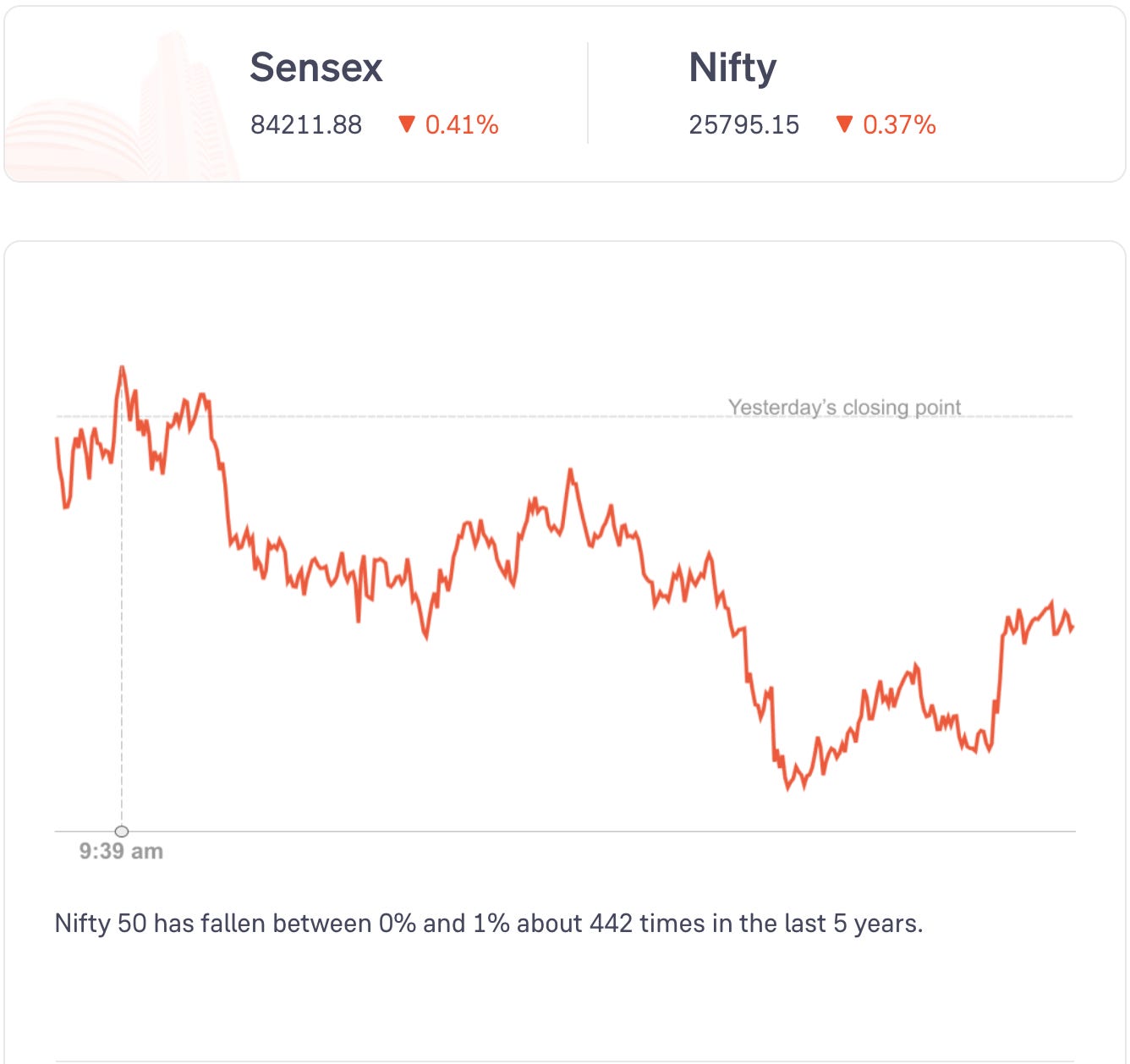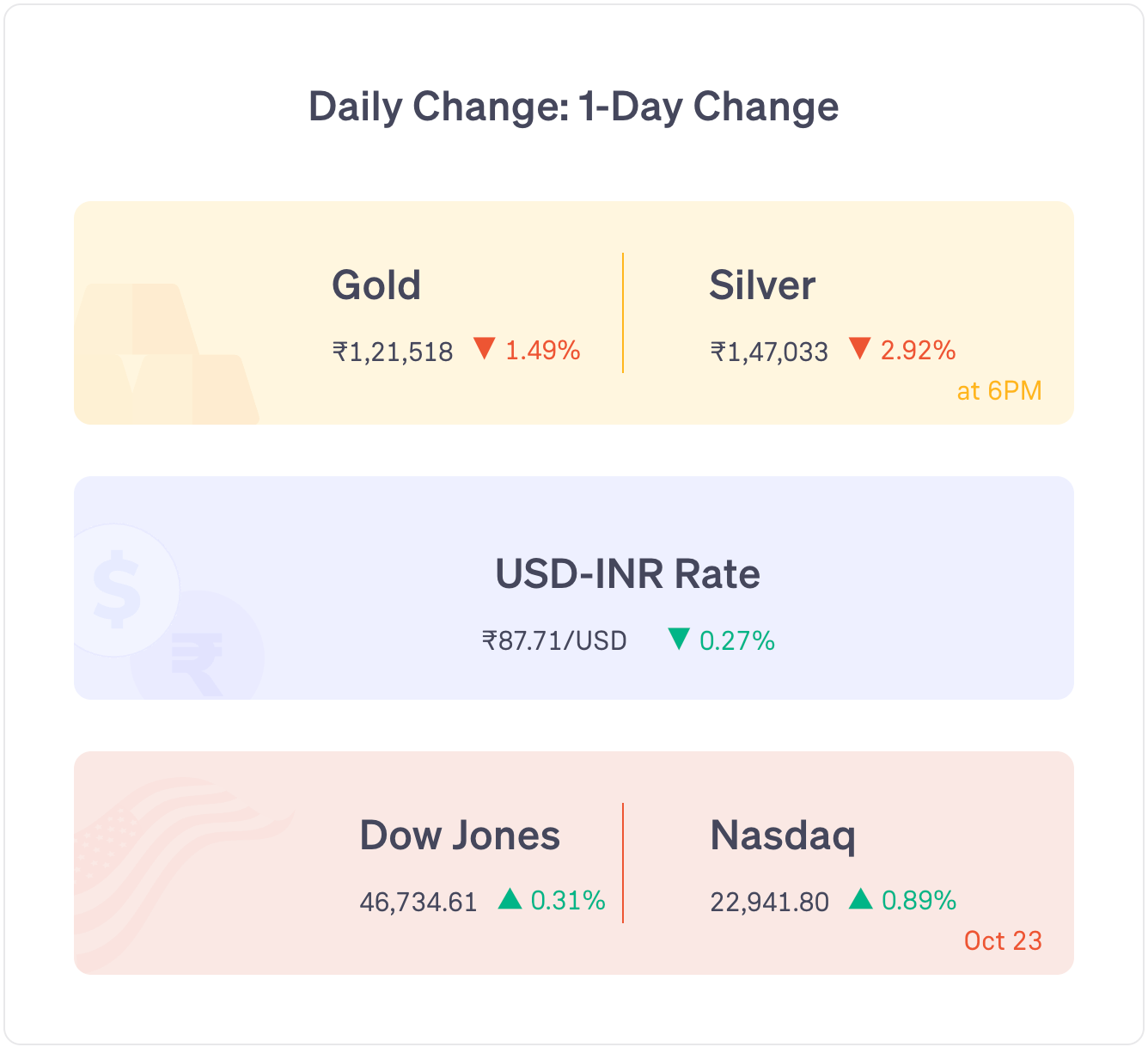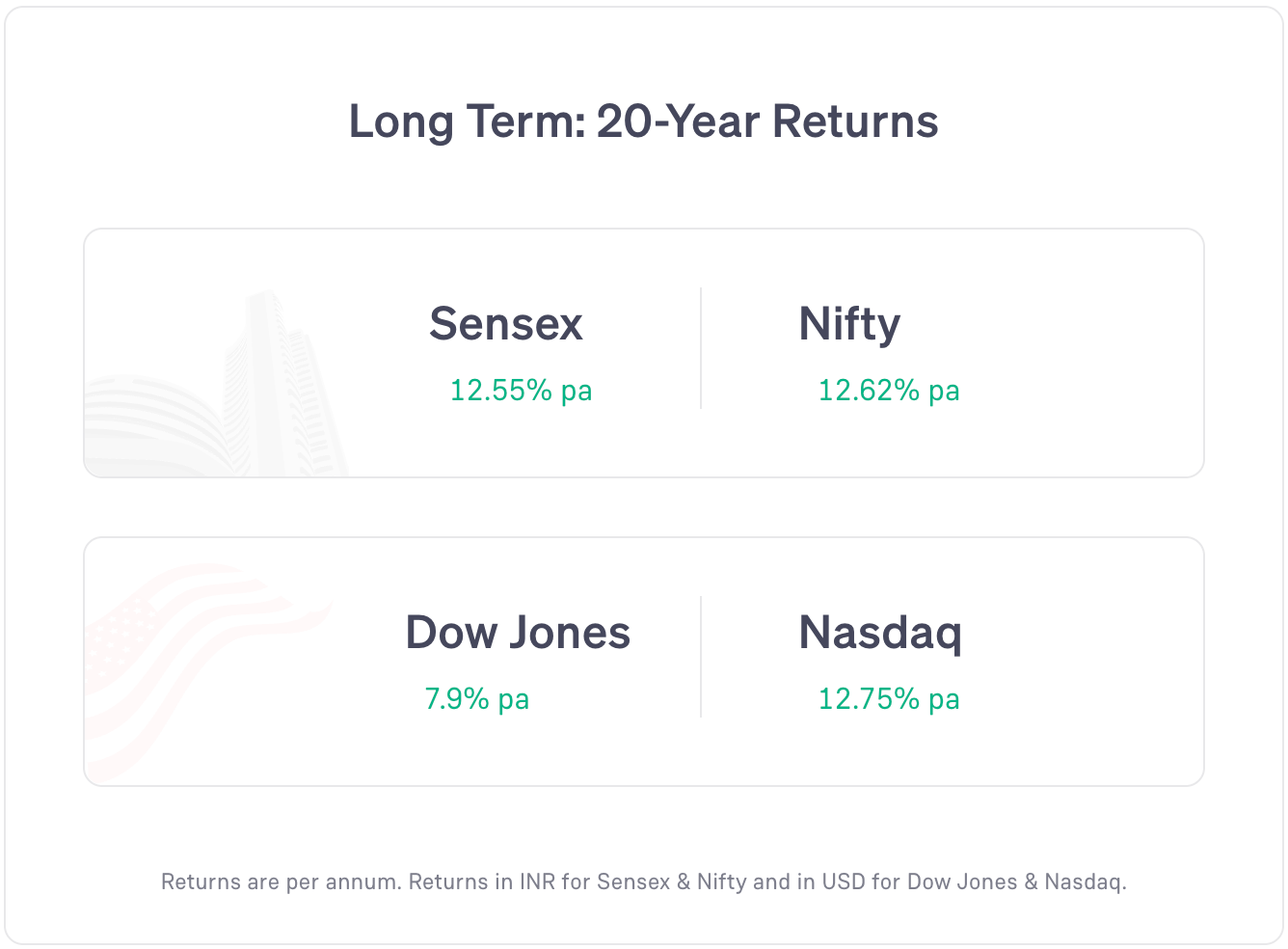Forex reserves rose, L&T receives orders from Hindalco and Tata Steel, & more — Groww Digest
Friday, 24 October 2025
Markets opened slightly below yesterday’s closing point.
Nifty 50 fell almost throughout the day and closed in the red.
Metal stocks and oil & gas stocks rose the most today. Healthcare stocks and private bank stocks fell the most.
Global markets: US markets and most Asian markets rose. European markets fell (as of 6 pm IST).
News
India’s forex reserves rose by $4.5 billion to $702.28 billion in the week that ended on 17 Oct.
SEBI has introduced a streamlined process requiring its prior approval before one portfolio manager can transfer a PMS business to another.
The USA’s annual inflation rate rose to 3% in Sept (vs 2.9% in Aug). Core inflation (excludes volatile items like food and energy) fell to 3% (vs 3.1% in Aug).
Japan’s annual inflation rate rose to 2.9% in Sept (vs 2.7% in Aug). Core inflation (excludes fresh food) also saw a similar rise.
India’s composite PMI fell to 59.9 in Oct (vs 61 in Sept). It means that business activity grew less in Oct, compared to Sept. This fall was due to a slowdown in the services activity, while manufacturing activity rose in Oct: as per preliminary estimates.
Stocks Updates
L&T: received large orders (Rs 2,500 crore to Rs 5,000 crore) from Hindalco for an aluminium smelter in Odisha and Tata Steel for a coke oven plant in Jamshedpur.
SBI Life: net profit fell 6.6% year-on-year to Rs 496 crore in the July-Sept quarter. Net premium income rose 23% to Rs 24,848 crore.
Dr Reddy’s: net profit rose 14.5% year-on-year to Rs 1,437 crore in the July-Sept quarter.
Lupin: launched a generic version of Ravicti Oral Liquid in the US which is used in the chronic management of urea cycle disorders.
Adani Enterprises: incorporated a wholly owned subsidiary, Adani Ropeways Ltd, to develop ropeway infrastructure projects.
Word of the Day
Dividend Reinvestment Plan (DRIP)
It is a plan that automatically reinvests the dividends you earn from stocks or mutual funds back into the same investment
Instead of receiving dividends as cash, they are used to buy more shares or units.
This helps your investment grow over time through compounding — without actively investing by yourself.
Not all investments offer DRIPs, so you may need to opt in or check if your stock, mutual fund, or brokerage firm offers it.
6 Day Course
Theme: commodities trading
Day 5: Friday
In stock markets, you can buy/sell shares (delivery).
Which means, the shares will come to your demat account.
Or, you can trade using futures and options (F&O).
Futures allow you to buy/sell at a fixed price at a future date. Options give you the option to buy/sell at a fixed price at a future date.
Similarly, you can trade using F&O in the commodity markets.
You can buy or sell the F&O contracts before they expire.
And finally, there is what’s called a spot contract. This is similar to a share delivery.
Which means, you will have to take delivery of the commodity you purchase.
Features Question
Q. “If a mutual fund invests in an ETF, will the fund also have to pay the expense ratio that would occur if I were to buy the etf directly?”Yes.
But the expense ratio is already paid from the returns. You do not have to pay it later.
Think about it like tax. It will be easier to grasp.
Let’s say you run a chocolate business.
Let’s say:
Tax on chocolates = 10%
Tax on sugar = 5%
Tax on cocoa powder = 8%
So when you buy raw materials — cocoa powder and sugar — you are buying from the supplier with tax already being added.
So you (chocolate factory owner) are indirectly paying 5% tax on sugar and 8% tax on cocoa powder.
Then, you make chocolate and sell it.
When this chocolate is being sold, a tax of 10% is charged on it (added within the MRP of the chocolate).
So the end customer is indirectly paying the tax on sugar, cocoa powder and also the finished chocolate product.
Similarly, if you invest in a gold mutual fund, you will be indirectly paying expense ratio to the mutual fund company.
But since that mutual fund is investing in gold ETFs, it will also be indirectly paying an expense ratio to the ETF companies.
Similar to the MRP of a product, the returns you get from a mutual fund are after all the expense ratios are deducted.
You do not have to pay any expense ratio or management fees on top of that.
Did you like this edition?
Leave a feedback here!






Nice information